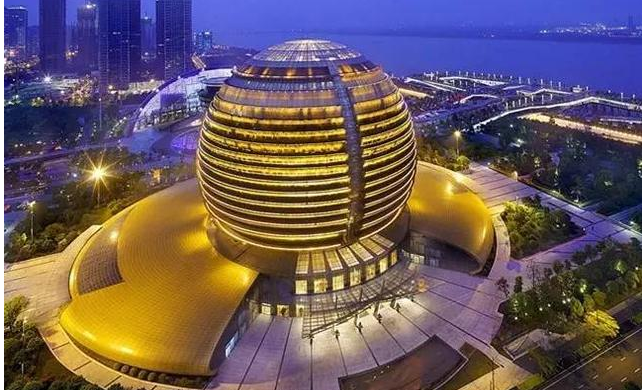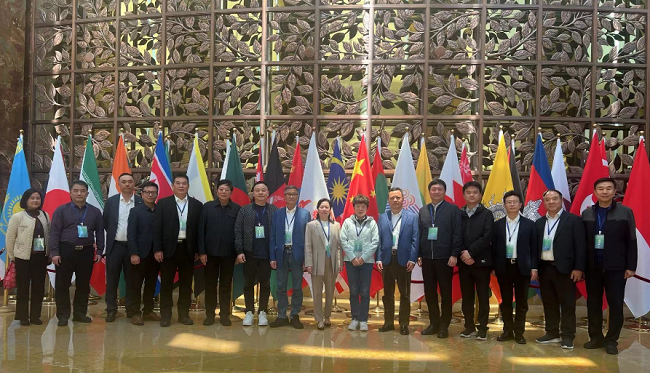New materials bring new growth momentum to the textile industry-Lyocell Sustainable Development Roundtable Forum
Since mid-Oct, ZCE cotton futures have been falling from 17,800yuan/mt and the recent price of the main contract has dropped to around 15,000yuan/mt. At the same time, as the traditional textile off-season approaches, there have been some promotional discounts in the lyocell market, and some downstream manufacturers lack sufficient experience in using lyocell, making discussions on how lyocell can achieve long-term sustainable development a hot topic.

Based on these demands, the lyocell industry leader held a roundtable meeting on sustainable development of lyocell at the InterContinental Hotel in Hangzhou. The fiber enterprises attending the meeting have an annual capacity of over 300kt/yr, accounting for more than 60% of the entire industry. The yarn enterprises attending the meeting consume more than 100kt of lyocell per year, accounting for about 50% of the industry. The attendees fully discussed the current status and future development of the industry and reached the following conclusions.

1. The attendees fully recognized the prospects of lyocell fiber itself and downstream usage, based on the following facts:
(1). Lyocell has a green production process. The solvent spinning process can achieve a recovery rate of over 99.7%, with minimal usage of chemical products. The strength of the product is comparable to polyester staple fiber and it also has the characteristics of cellulose fibers such as renewable, degradable and skin-friendly.
(2). Although the price difference between cotton and lyocell has narrowed in recent years, considering the fiber loss and processing costs in the back-end industry chain, lyocell's cost advantage throughout the industry chain is still very outstanding compared to traditional cotton spinning.
(3). Lyocell currently has mature applications in the home textile and denim fields, and some performance was explosive in 2023. From the fiber characteristics of lyocell, it also has obvious practicality in other application fields. The unique "frost" effect of fibers under specific processes has a unique fashion style.
(4). Cotton production has shown a steady downward trend in the past decade. With the increasing competition for land and extreme weather conditions, there will be a shortage of cotton fibers in the future. From historical data and the current economic situation, while the overall fiber consumption growth rate may slow down, it will still maintain a positive growth trend. Global fiber consumption growth in the next five years may exceed 10 million tons. In the context of decreasing cotton production and less new capacity of viscose staple fiber, the supply gap of cotton products could be replaced by lyocell.
2. The application field of lyocell will continue to expand.
From the development in 2023, in addition to traditional and relatively mature fields, lyocell is also increasing applications in new fields, especially in the knitting field. There is a huge knitwear market in China, and if lyocell's application in this area becomes more mature in the future, the usage is expected to double quickly.
At the same time, lyocell is known as the "versatile fiber". It has good blending properties not only with cotton, but also with polyester, wool, viscose, and hemp fibers. For some existing fabrics, adding a certain proportion of lyocell fiber can achieve a specific style. There is big room for growth in these blending fields in the future.
In addition to tradition textile field, there is outstanding performance in nonwovens as well. For example, flushable fiber is currently in short supply, and part of the raw material is ultra-short lyocell fiber.
3. Strengthen industrial chain interaction
Currently, lyocell fiber enterprises have led the entire industry chain in development, and some downstream leading enterprises are actively participating. However, the overall participation rate still needs to be improved. For example, in the printing and dyeing enterprises, some experts pointed out that although there are some excellent lyocell dyeing and printing capabilities concentrated in Xiaoshan and Shaoxing, less than 20% of the dyeing and printing mills have such capabilities. According to the experts, although lyocell's dyeing and printing have certain technical content, the technical threshold is not insurmountable. If more dyeing and printing plants join the lyocell dyeing and printing industry in the future, they can provide richer lyocell fabrics and further reduce the cost of lyocell fabrics, thereby promoting the application of lyocell.
From the actual performance, there has been a significant increase in upstream and downstream interaction in 2023, and Chinese textile industry is experiencing a significant increase in understanding and recognition of lyocell. According to experts, in the context of rumors of cotton yarn inventory exceeding 1 million tons in the Guangdong market, with a national inventory peak exceeding 2 million tons, some cotton textile enterprises have already turned to use lyocell under high inventory pressure.
4. Strengthen product R&D
During the conference, the attendees discussed the innovation of the companies, with fiber companies showcasing new products such as ultra-short fibers and flame-retardant fibers. For example, lyocell flame-retardant fibers have overcome the issues with synthetic fibers melting and kept the soft and skin-friendly features of cellulose fibers. They have broad prospects in military, home textiles, and specific applications for clothing.
Downstream companies also stated that there have been significant breakthroughs in high count and multi-component blends with yarn containing lyocell fiber. As product variety expands, companies have overcome the issue of lyocell fibers being suitable only for certain seasons, making it suitable all-year-round.
In addition to discussing their own product R&D efforts, the attending companies also expressed their intentions to invest more in R&D across the entire industry chain, making it faster, simpler, and more economical to use lyocell fibers or related products.
5. Strengthen product promotion and industry activities
Experts at the meeting analyzed the development of lyocell fibers this year and generally acknowledged that the textile industry's awareness of lyocell fibers has significantly improved in recent years. Confusion between brands and product names has significantly decreased.
The leading companies have also coordinated to optimize their promotional frequency. They will better promote lyocell's advanced sustainability features in specific places and at specific times for specific target groups.
6. Current and future economic situations
As the global economic situation is complicated, experts at the conference analyzed the domestic and international situations. They generally believe that economic uncertainty is higher than in the past few years. They anticipate domestic demand growth to be basically certain in 2023 and likely to continue in 2024. There are some differences in opinions about the foreign market, but overall, considering the easing of US-China relations and declining inventory outside China, there is a greater possibility of maintaining positive export growth in 2024. Some companies have also proposed a doubling of their export plans with clear strategies.
7. Limited room for cost reduction
The attending companies also analyzed the industry chain situation. As domestic production increases, the cost of lyocell fibers has decreased somewhat in recent years. However, there is little room for lyocell's costs to decrease further in the future. Among the main raw materials, lyocell dissolving pulp has already dropped to the level of VSF-grade dissolving pulp, and there is no more room for further price reduction. The prices of NMMO and hydroxylamine have dropped significantly due to their localization, but their costs will not significantly decrease further in 2024 considering the upstream benefits.
8. Pursue orderly market development and establish an effective supply and demand balance mechanism
Although the long-term development of lyocell fibers is optimistic, due to the current economic environment's uncertainties, there may be periodic market fluctuations. The attending companies generally recognize that the balanced supply and demand of the upstream and downstream are prerequisites for the industry's healthy development. Facing seasonal downturns, some large factories have already arranged for maintenance, with CTA already planning for 40kt/yr of capacity for maintenance. Sateri also shared its company development plan, which does not have any new capacity for the next one and a half years and has plans to adjust operating rate based on market conditions before the Spring Festival.
Additionally, some participating companies have proposed other suggestions such as respecting market rules, increasing tolerance for price fluctuations, so that downstream companies can better control costs and pursue profits based on market conditions. Reasonable information disclosure can also allow downstream companies to have a better understanding of the market.
The participating companies highly recognized this exchange form and believe that when the industry is unsure, in-depth communication between upstream and downstream can better clarify development ideas to promote the coordination of lyocell's industry chain and realize more sustainable development.
The roundtable was hosted by Mr. Wang Guogang, chief editor of ChinaYarn.com and Ms. Wu Yongping, deputy editor-in-chief. Mr. Ding Jinqi, chief analyst of cellulose from CCFGroup, shared insights on industry development cycles, 2023 market operating data, and the future five-year development prospects for lyocell fibers. Ms. Zhu Beina, the chair of the China Cotton Textile Industry Association's supervisory committee, provided a summary based on the overall industry situation. It is believed that lyocell fiber, as a new textile material, can bring new growth points to the industry in the face of a slowdown in the overall textile industry's growth.
- Top keywords
- Cotton Price
- Cotton Futures Price
- Cotton Futures
- CZCE
- PTA Futures Price
- Chemical Fiber
- Polyester Prices
- Wool price
- PTA Futures
- Shengze Silk
- China
- Yarn Price
- price
- China Textile City
- Fibre Price
- Benzene Price
- Cotton
- Index
- Cotton Index
- PTA
- fabric price
- NYMEX
- Top 10
- textile industry
- Spot Cotton
- Cotton Yarn
- Polyester Price
- Futures
- PTA Price
- cotton yarn price

